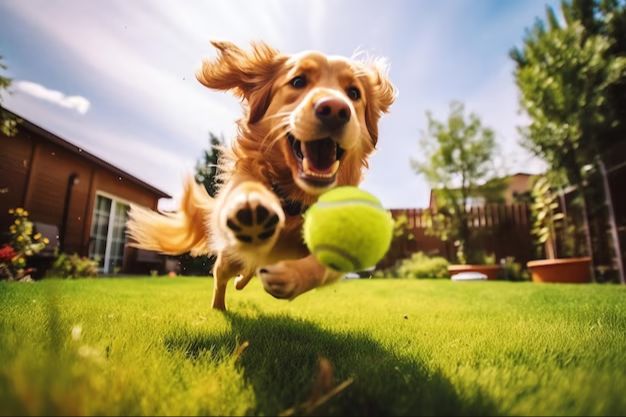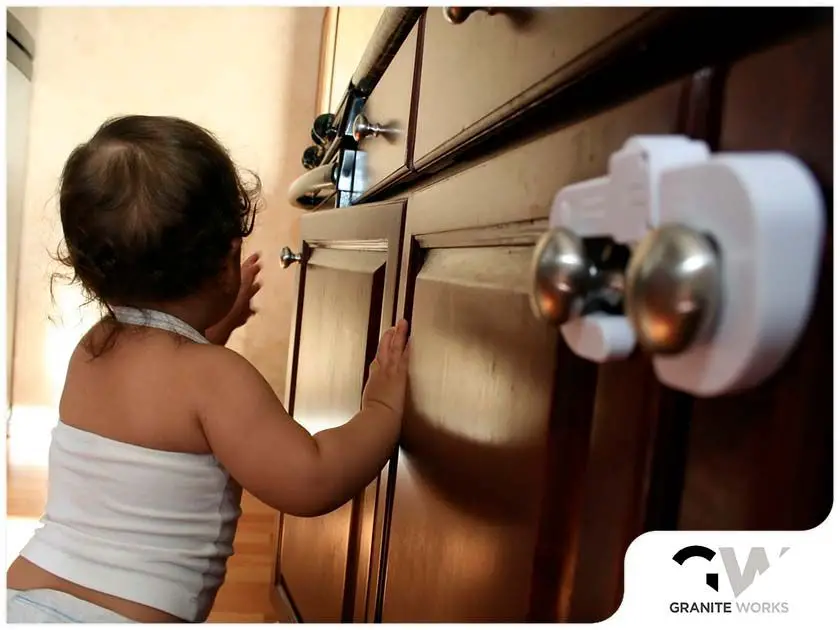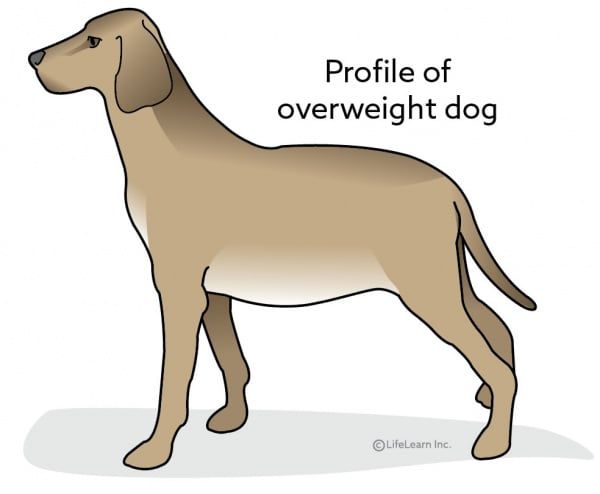Understand Why Your Dog is Food Obsessed
There are several potential reasons why your dog may be overly focused on food:
Evolutionary Drive
Some experts believe that dogs retain an evolutionary drive to eat as much food as possible from their wolf ancestors, who needed to survive periods of famine and scarcity (source). This instinctual “feast or famine” mindset can lead dogs to act like every meal might be their last.
Lack of Stimulation
Dogs that are bored, inactive, or have insufficient mental stimulation can become preoccupied with food as their main source of enjoyment. Without adequate outlets for their energy and inquisitive nature, the promise of meals and treats can become their main focus (source).
Medical Issues
In some cases, an underlying medical condition may be causing chronic hunger or insatiable appetite in dogs. Issues like diabetes, Cushing’s disease, hypothyroidism, or gastrointestinal parasites can all increase food drive. Consulting your vet can rule out any potential health problems.
Keep Your Dog Active and Stimulated
One of the best ways to curb food obsession in dogs is to keep them active and provide mental stimulation. Get your dog moving and work that brain!

Make sure your dog gets daily walks and playtime. Aim for at least 30-60 minutes of exercise per day. This will help burn excess energy and keep your dog from fixating on food out of boredom. Take engaging walks around the neighborhood or play fetch in the backyard. Even indoor play like tug-of-war can be beneficial.
Use food puzzle toys like Kongs to make your dog “work” for their food. You can stuff a Kong with your dog’s kibble or mix in peanut butter and freeze it for a longer-lasting challenge. This activates their natural foraging instincts. Other great food puzzles include snuffle mats, treat balls, and food dispensing toys.
Incorporate short 5-15 minute training sessions throughout the day using your dog’s regular kibble as reward-based treats. Basic obedience and new trick training gives your dog mental exercise. Start inside with few distractions and work your way up to more challenging scenarios.
Keeping your food obsessed dog active and engaged will help redirect some of that obsessive energy in a healthy way.
Use Portion Control
One of the best ways to manage a food obsessed dog is to feed set meals rather than free feeding. Free feeding allows a dog to eat as much as they want, whenever they want. This makes it easy for them to overeat. Instead, feed your dog measured meals 2-3 times per day.
When portioning your dog’s meals, the general rule of thumb is to feed them 2-3% of their ideal body weight per day. However, every dog is different so this should just be a starting point. Consult with your vet to determine the ideal daily caloric intake for your specific dog based on their age, activity level, and health status. Purchase a measuring cup to carefully portion out the precise amount at each mealtime.
It can also help to avoid giving your dog human food scraps, which can lead to begging behaviors. The only human food you should use is small pieces of fruits, veggies or lean meat as rewards during training. Check with your vet for human foods that are safe for dogs. Only give tidbits during structured training, not from the table.
With portion control and set feeding times rather than free feeding, your dog will learn that food is provided at certain times rather than available at all times. This can help curb the obsession and make them more content at mealtimes. For sources see: Portion Control for Dogs, Tips for Portion Control, Importance of Portion Control
Store Food Securely
One of the best ways to manage a food obsessed dog is to store all food securely and out of reach. This prevents your dog from getting into the food when you are not around to supervise.
Use puzzle feeders or snuffle mats when feeding your dog. These make your dog work for their food, while keeping it contained. The dog has to manipulate the toy to get the kibble out. This can help satisfy their food drive while slowing down their eating.
Keep all human food, dog food, and trash inaccessible when you are not home. Use baby gates, doors, or crates to block off access to areas like the kitchen or pantry. Consider installing child-proof latches on cabinets and drawers that contain food. You can also get trash cans with locking lids.

Crate train your dog or confine them to a safe area when you are away from home or cannot supervise. This prevents them from getting into mischief and potentially dangerous situations involving food.
Train Impulse Control
One of the most effective ways to train a food-obsessed dog is to teach impulse control commands like “leave it” and “wait.” The “leave it” command teaches your dog not to touch food until you give them permission. Start by placing a treat on the floor and covering it with your hand. When your dog investigates but doesn’t eat the treat, mark the behavior with a clicker or word like “yes” and reward them from your other hand. Over many repetitions, gradually wait longer before rewarding so your dog learns more patience.
The “wait” command is useful for situations like when you’re preparing their food bowl. With your dog a few feet away, place their bowl down and say “wait.” If they start moving towards it, cover the bowl and start over. When they can stay still, reward and release to the bowl. Increase the duration and distance of the waits. Vary the release word sometimes so they can’t anticipate. Teaching impulse control takes a lot of practice and repetition, so be patient. Focus on setting your dog up for success. How to Teach Your Dog Emotional Self-Control

To further reinforce impulse control, have your dog practice commands and tricks to earn their meals rather than gulping food from a bowl. Hand feed a portion of kibble as rewards for obedience behaviors like sit, down, stay, spin, shake. Not only does this provide mental exercise, but your dog will learn food comes from you performing desired behaviors rather than scarfing meals.
Set a Feeding Routine
Setting a consistent feeding routine is crucial for training a food-obsessed dog. Feed your dog at the same times every day rather than leaving food out at all times. This will help him learn that food comes at predictable times.
When it’s time to eat, put your dog’s regular portion of food down in his bowl and give him 15-20 minutes to eat. Then promptly pick up any uneaten food. This teaches him that if he doesn’t eat when food is available, it will disappear.
Feeding your dog 2-3 scheduled meals daily rather than grazing is ideal. The number and timing of meals depends on your schedule, but aim for every 8-12 hours. Puppies and high-energy dogs may need more frequent meals.
Sticking to a strict feeding routine requires consistency. So commit to the schedule and don’t give in if your dog begs between meals. With time, he will learn that begging doesn’t work and that food comes on your terms.
For advice on optimal feeding amounts, check with your veterinarian or follow guidelines on your dog food’s packaging based on your dog’s age and weight.
Some sources recommend [1, 2] feeding adult dogs twice daily, but speak to your vet to determine the best routine for your dog’s needs.
Use Reward-Based Training
One of the most effective methods for training a food-obsessed dog is through positive reinforcement and reward-based training. The basic idea is to reward your dog with praise, treats, or play when they demonstrate the behavior you want to reinforce. For example, if your dog waits patiently without begging while you prepare their food, be sure to praise them and give them a treat for their patience.
You can use reward-based training to teach your dog impulse control around food. Have them sit and stay while you place a treat on the floor, praising and rewarding them when they wait for your cue to take the treat. Over time, increase the difficulty by placing treats closer to your dog or having them wait longer before getting the reward. This can teach your dog to control their impulses and not lunge for food.[https://www.petmd.com/dog/behavior/how-to-train-a-dog-with-positive-reinforcement]
It’s also important to ignore unwanted begging behaviors. Don’t reward your dog with food if they nudge your hand or bark while you’re eating. Instead, redirect their attention to an appropriate chew toy. With time and consistency, your dog will learn that patience and good manners are the only ways to earn rewards.
Consult Your Vet
If your dog’s food obsession seems extreme or has developed suddenly, it’s important to rule out any potential medical issues by scheduling an appointment with your veterinarian. Medical conditions like parasites, digestive disorders, or metabolic diseases can cause increased hunger and food drive in dogs. Your vet can run tests to diagnose any underlying conditions that may be causing your dog’s behavior.
Even if your dog gets a clean bill of health, consulting with your vet for advice on proper diet and feeding recommendations is still recommended. Some dogs need more or less calories depending on factors like age, activity level, and breed. Your vet can help you determine the right amount and type of food that will keep your dog satisfied while still maintaining a healthy weight.
Veterinary nutritionists can also provide customized feeding plans and tips to curb food obsession such as using puzzle toys and switching to low-calorie prescription diets. Getting professional guidance from your vet is key in addressing food obsession in dogs safely and effectively.
Consider Prescription Weight Loss Food
Prescription weight loss diets from veterinarians can be very effective for food obsessed dogs. These diets are formulated to help dogs lose weight by focusing on higher protein, lower fat amounts. According to Hill’s Prescription Diet, the high protein content helps dogs feel fuller faster, while the lower fat supports a healthy metabolism.
Veterinary prescription diets like Hill’s Prescription Diet r/d and Metabolic contain optimal protein and fat ratios to promote weight loss in dogs. The lower fat amounts help reduce overall calorie intake while still providing satisfaction from the higher protein amounts. Studies by Hill’s show that 96% of overweight dogs lost weight at home in just 2 months when fed these prescription diets.

Work with your veterinarian to determine if a prescription weight control diet could help your food obsessed dog reach a healthy weight. These specialized formulas help control hunger while providing complete and balanced nutrition tailored to weight loss needs.
Be Patient and Consistent
Change takes time for dogs, so be patient if your food-obsessed dog does not improve right away. It can take weeks or months of consistent training and routine for a dog to develop new habits around food.
Stick to the regimen of scheduled feedings, impulse control training, exercise, and other techniques. Do not waver or make exceptions, as this can confuse your dog and undermine the training. Take things slowly and focus on incremental improvements day-to-day or week-to-week.
With time and consistency, the new routines will start to feel normal to your dog. But you must commit to the long haul and not expect quick fixes when changing any engrained behavior in dogs. Celebrate small successes along the way to keep you and your dog motivated.
